The Art of Imperfection
The intentional and unintentional meet in Leslie and David Moore’s High Point home
By Maria Johnson • Photographs by Amy Freeman
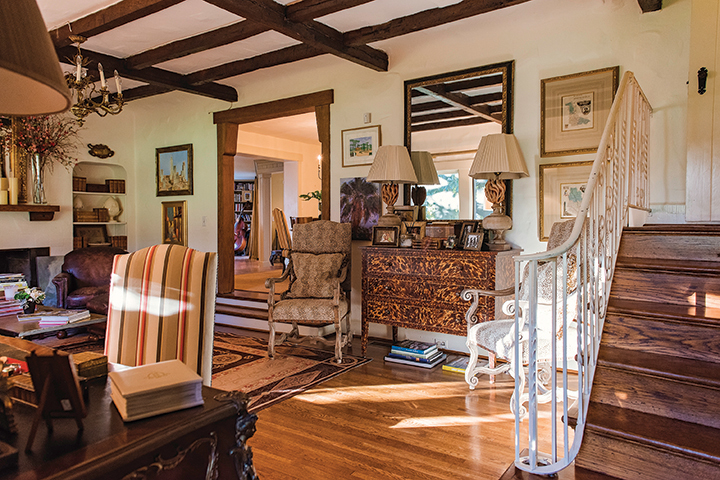
Her blousy white shirt — worn simply and smartly over black leggings and accented with white stone beads — isn’t exactly a lab coat, but you could think of interior designer Leslie Moore as a domestic scientist.
And you could think of her home, a nearly 100-year-old English-style cottage in High Point’s Old Emerywood neighborhood, as the place she conducts her residential experiments.
“This is my laboratory,” she says. “I try things out here.”

She points to the hardwood ceiling, starry with can lights, in her vast kitchen.
“I wanted to try that. None of my clients would do it,” she says. “I love it. It makes the ceiling disappear. If this room had a white-painted ceiling, it would look like a runway.”
Strolling through the home, where Leslie and husband David have raised two children, is the best way to get a feel for Leslie’s taste.
“It’s very eclectic,” she says. “That’s an overused word, but that’s what it is.”
Her outlook was informed by her art history education at Vanderbilt University and a short stint in Jackson, Mississippi, where David, an ear-nose-and-throat specialist, was a resident.
 While in Jackson, Leslie took interior design classes at Mississippi College and worked for a residential designer who imported European antiques. When David had time off, the couple drove to New Orleans and haunted the shops along Magazine Street.
While in Jackson, Leslie took interior design classes at Mississippi College and worked for a residential designer who imported European antiques. When David had time off, the couple drove to New Orleans and haunted the shops along Magazine Street.
“We’d go to all of these antique stores, and then we’d go eat,” Leslie says. “It was awesome.”
From that experience, Leslie gained an appreciation of French-flavored furniture and accessories. The woman knows her way around Empire, Louis XV, Napoleon III, and Directoire styles. She relishes weaving together old and new pieces of different genres.
“When you do things like that, it gives the room an evolved look, like it wasn’t all done at one time,” she says. “I like things to look lived-in, even if you haven’t lived there very long. You don’t want it to look like the designer just walked out the back door.”
When David joined a practice in High Point in the early ’90s, he and Leslie bought a house that was the perfect proving ground for her ideas. The house, built in the 1920s, was originally a two-bedroom cottage on a sloping corner lot in a sparsely populated section of the then-new development.
An early black-and-white photo, given to the Moores by the daughter of the developer, shows a modest gabled brick house, painted white, with thick timber window frames and a copper overhang at the front door.
The setting is downright pastoral; no other structures are visible. The front yard is striped with tall pines and trimmed by a split-rail fence. The driveway is dirt.
“We have at least half a dozen magnolias, and they’re enormous. They’re not even in the picture,” says Leslie.
Early on, physician Stanley “Brick” Saunders owned the house. He and his family lived there for several decades.
“When we moved here, a lot of older people referred to it as the Saunders House,” Leslie says. “You know how it is: It’s never called your house until you move.”
After the Saunders clan left, the home changed hands several times, sprouting additions and modifications along the way.
The house encompassed nearly 3,000 square feet in 1994, when the Moores moved in with their daughter, Braeden, now 25, and the first in a long series of Golden Retrievers. The following year, son Will arrived.
Leslie dipped her toe into a career a few years later. She imported antiques and sold them in Charlotte for a while. In the late ’90s, she launched a solo design business.
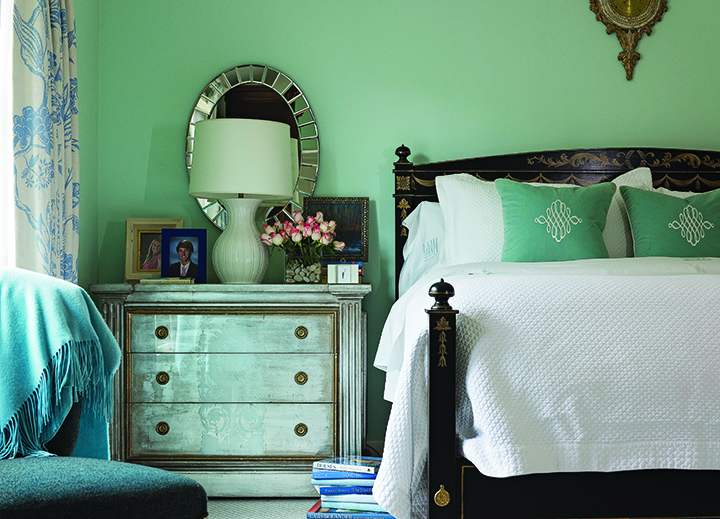
“I’ve always been a freelancer,” she says. “All of my work has come from referrals and word of mouth.”
Her clients include some of High Point’s well-known furniture families.
“I feel very humbled by that,” she says.
The families pay Moore to do what she has done in her own home: sweat the details until the space sings.
“My husband says I’m picky,” she says. “I say I’m discerning.”
Her front room, which is layered with warm colors and textures, is a microcosm of her exacting approach.
Take, for example, the high-armed Knoll-style sofa. It’s a custom piece — “My middle name is ‘custom,’ ” Leslie says — covered with a milk-chocolate brown cotton velvet in a basket weave. The sofa is dabbed with cotton-print pillows in rose, gray and bone.
The gold metallic coffee table, stamped with a linen-pattern top, hovers over a toasty Aubusson rug.
The yawning fireplace is flanked by two chairs: a smoking chair covered in ostrich-embossed brown leather and a slipper chair cloaked with a rosy pink-and-taupe toile slip cover. A creamy cashmere throw lolls over the back. “I’m all about throws,” Leslie says.
The other end of the room is anchored by a meaty chest of drawers that was painted with a tortoise shell pattern at The Wind Rose in Greensboro. Until it closed a few years ago, the store was a designers’ mecca of custom-made furniture and finishes.
Leslie balanced the chest with an antique French writing desk on the opposite wall. With its leather inset top and molded gold ormolu accents, the desk is more ornate than Moore’s overall style, and certainly fancier than the room itself, which is rustic with wavy hand-troweled plaster walls and a beam-embedded ceiling.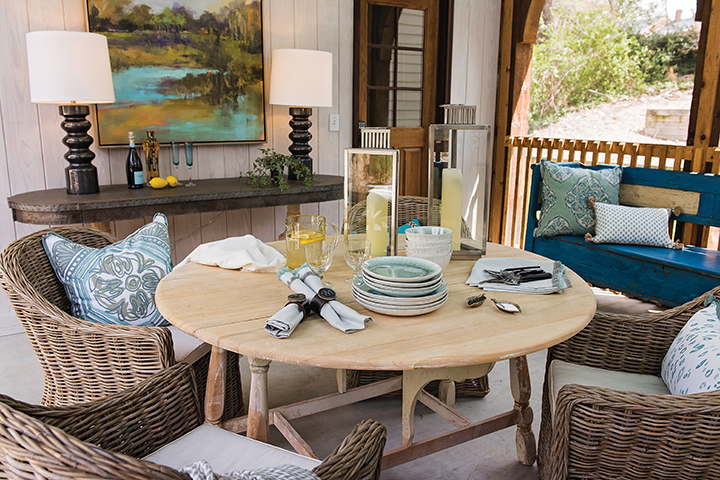
But the desk works, and it’s evidence of how Moore stamps a room with curveballs —unexpected splashes of colors, textures and styles. Uniformity is not her way.
Often, her off-speed pitches show up on the walls. She’s not much on contemporary furniture, but she laps up contemporary art, as long as it’s original.
For a client in Pinehurst, she’s assembling the works of emerging Southern female artists. She’s adamant that art does not have to match the sofa.
“Buy what you are drawn to,” she advises.
All of the Moores’ art is original, and some of it originated with them.
Leslie points to a piece that she did, an impressionistic acrylic painting of a European alley. Another wall holds a precise watercolor that David painted, guided by a photograph of the garden at Villa Borghese, which they visited in Italy. The columnar cypresses and umbrella-shaped pines captivated him. More of his paintings — abstract color blocks — are grouped in the butler’s pantry and walk-through bar.
David confines his artistic bursts to music these days. He plays upright bass in a new-grass band called Blue Ridge James. The group was known as Blue Ridge Jams, with no “e”, until a venue wrongly advertised them as Blue Ridge James, and the bandmates decided they liked that name better.
Leslie says that David doesn’t have, or want, much say in how she decorates. All he asks is that no one disturb his encampment, a planet with just enough gravity to suck in musical instrument cases, papers, files, packs and the like, on one end of the family room.
“This I’d like to blow up,” Leslie says, waving her hands at the loose ends. “Just like he’d like to blow up what we call Mommy World in the kitchen.”
Mommy World is a catchall counter full of Target bags, reading glasses and recently opened mail. Life in progress.
Leslie made sure there was plenty of room for that when they doubled the size of house with a massive addition 10 years ago.
Away went the old breakfast room, deck and carport. In came a two-car garage with upstairs playroom and office. The satellite is docked to the house with a screened breezeway, a favorite place for the family to catch a breeze and a bite to eat.
A colonnade of chunky posts and curved brackets bolster the breezeway.
The thick beams and beefy wooden door and window frames — distinctive with their overhanging lintels — echo the original house. So does
the unusual brickwork.
Under Leslie’s watchful eye, masons replicated the squash mortar, which spills from between the bricks like an overloaded tuna sandwich, and the occasional clutch of bricks that jut from the otherwise plumb walls.
“Some of the masons were like, “I don’t know about this,” she says. “But once they did it, they got into it. They were feeling very artisan-like.”
The main house grew, too. The huge new kitchen revolves around an island that seats six; no breakfast table need apply.
An enclosed loggia punched with skylights overlooks a terrace.
An airy new master bedroom provides a refuge. The master is as cool and restful as the sitting room (at the front of the house) is warm and spicy.
“If I had a refrigerator and a Keurig up here, I could stay here 90 percent of the time,” says Leslie.
The bedroom is a study in the unexpected. For bedside tables, Leslie uses chests of drawers, each of a different style and color. Her fondness for chests is well-established throughout the house. In Leslie’s mind, drawers beat shelves for storage every time. She and David use the bedside chests for clothes. A towering armoire holds linens.
A television floats above a raised gas fireplace that’s built into a wall across from the king-size bed.
“I wanted to see it,” Leslie says, explaining the elevated firebox.
More surprises converge where pale aqua walls meet cotton print drapery panels with periwinkle blue, a hue that’s repeated in the delicate trellis pattern of the wool carpet.
“It doesn’t need to match; I don’t want it to match,” she says. “I tell my clients, if the colors don’t match, it’s easier on your eye. In nature, nothing is the same color.”
She credits her art-history training for this understanding.
“Sometimes,” Leslie says, “it’s the color that you think shouldn’t go that makes the piece and gives it fluidity.”
As with most old houses that have been appended, the Moores’ place is full of quirks and whispers of lives past: half-steps and slightly ramped changes in floor elevations; scrolled iron stair railings; white-painted plank doors leading to the original bedrooms.
It’s all fine with Leslie.
“I like things perfectly imperfect,” she says. OH
Maria Johnson is a contributing editor of O.Henry magazine. Email her at ohenrymaria@gmail.com.

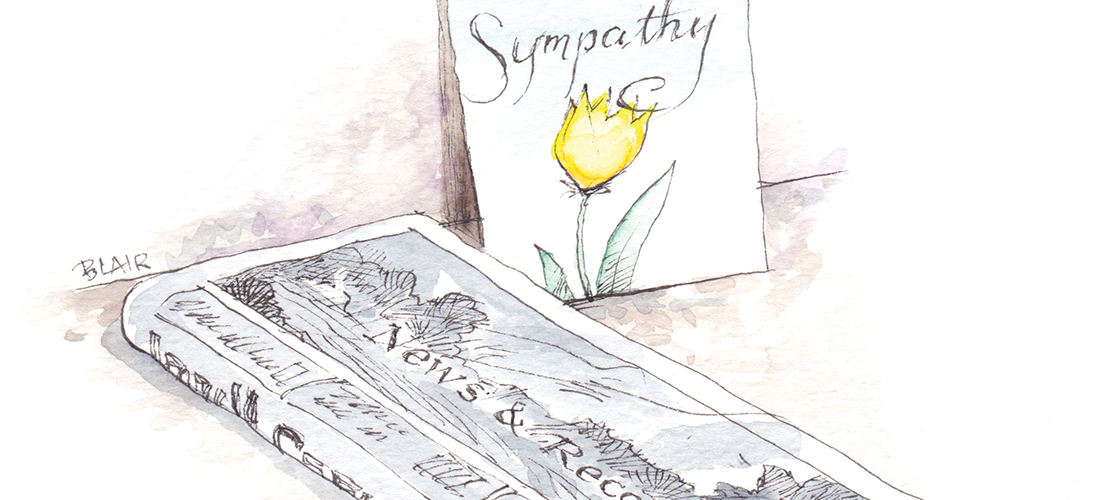








 W
W




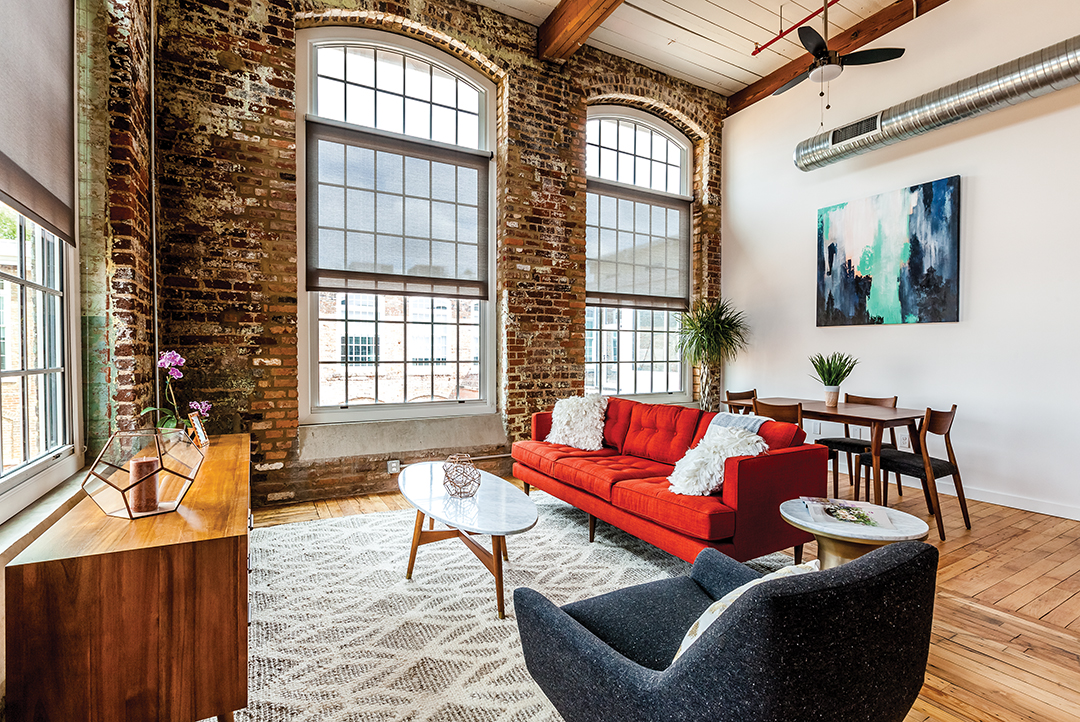

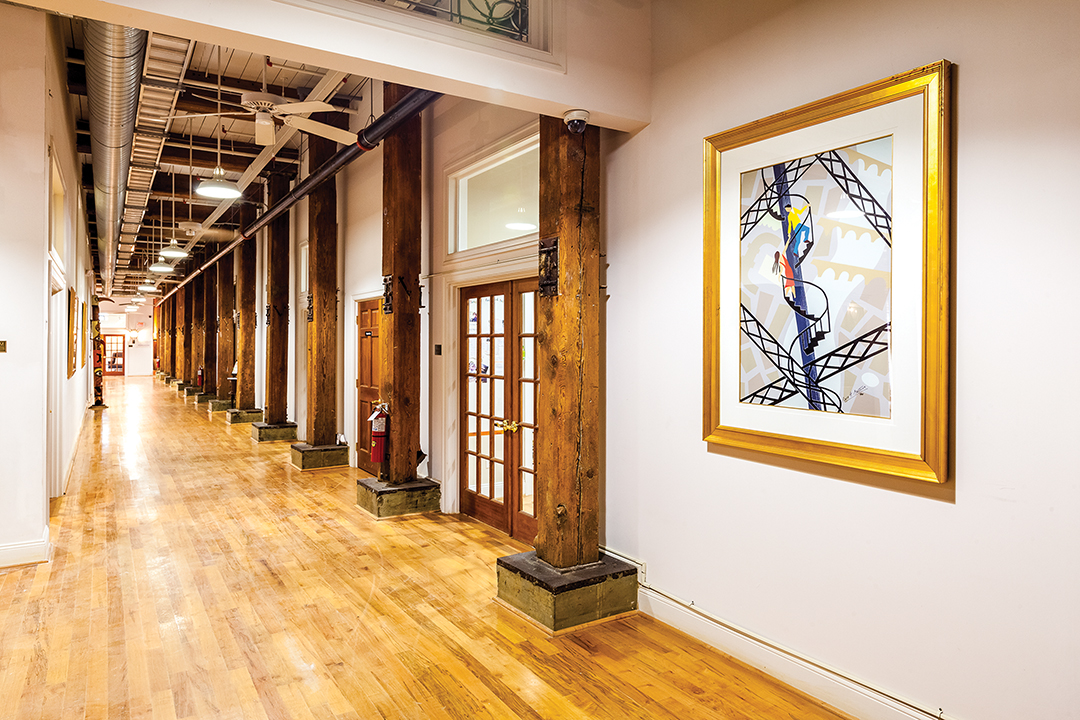 It’s a miraculous makeover of colossal proportions, this Gate City phoenix. Listed on the National Register of Historic Places, Revolution Mill had to be gutted and reimagined from the ground up. The original maple flooring, sturdy brickwork, oak support beams and frames were all preserved and enhanced with the latest technological advances, then made to look sleek and ultramodern with interior glass walls. The result is a hive of activity with 250,000 square feet of office and studio space where the entrepreneurial spirit thrives. The variety of enterprises afoot runs the gamut — optometry, portraiture, finance, retail, advertising, dining, digital illustration, furniture design, 3D rendering, you name it.
It’s a miraculous makeover of colossal proportions, this Gate City phoenix. Listed on the National Register of Historic Places, Revolution Mill had to be gutted and reimagined from the ground up. The original maple flooring, sturdy brickwork, oak support beams and frames were all preserved and enhanced with the latest technological advances, then made to look sleek and ultramodern with interior glass walls. The result is a hive of activity with 250,000 square feet of office and studio space where the entrepreneurial spirit thrives. The variety of enterprises afoot runs the gamut — optometry, portraiture, finance, retail, advertising, dining, digital illustration, furniture design, 3D rendering, you name it.
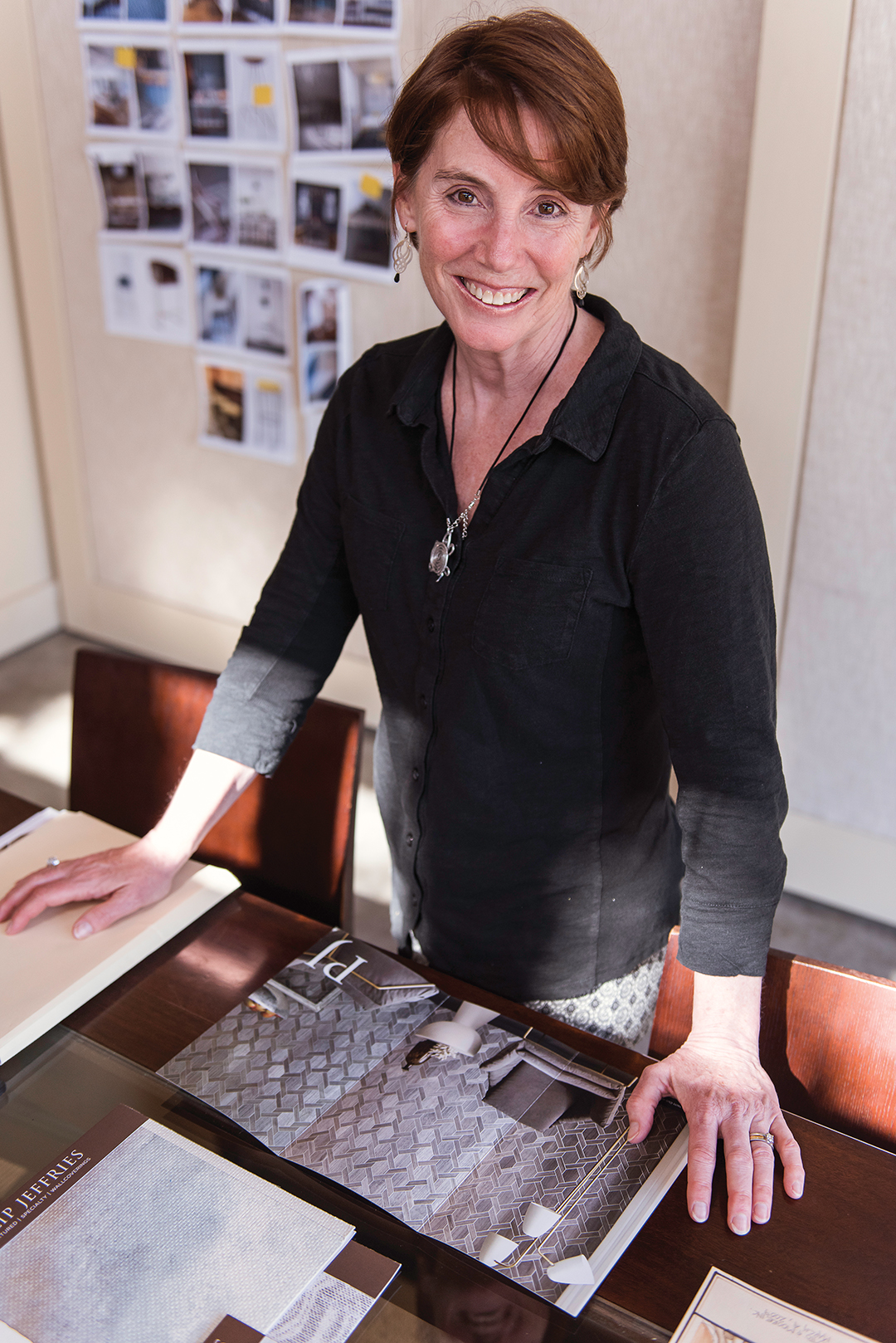
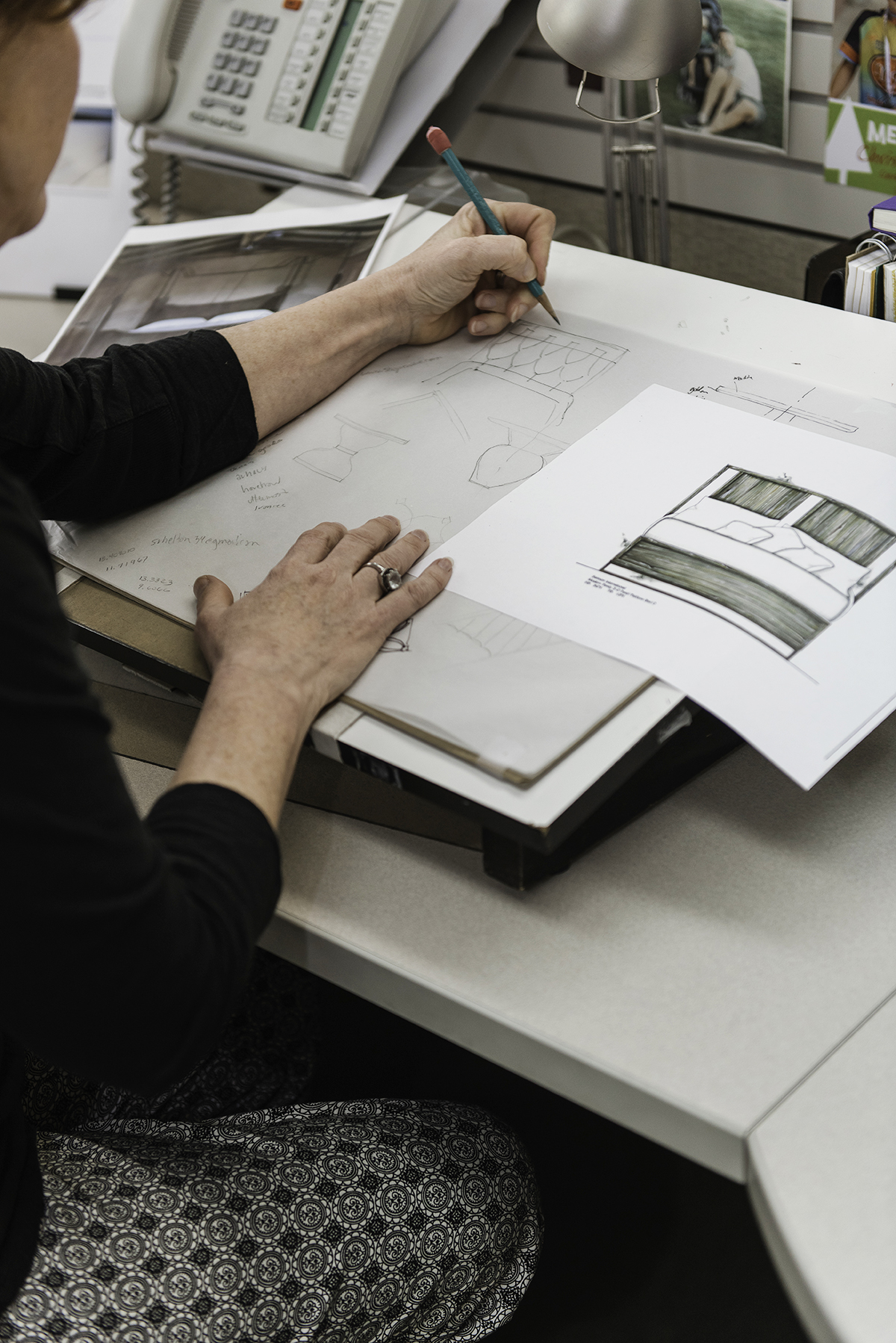



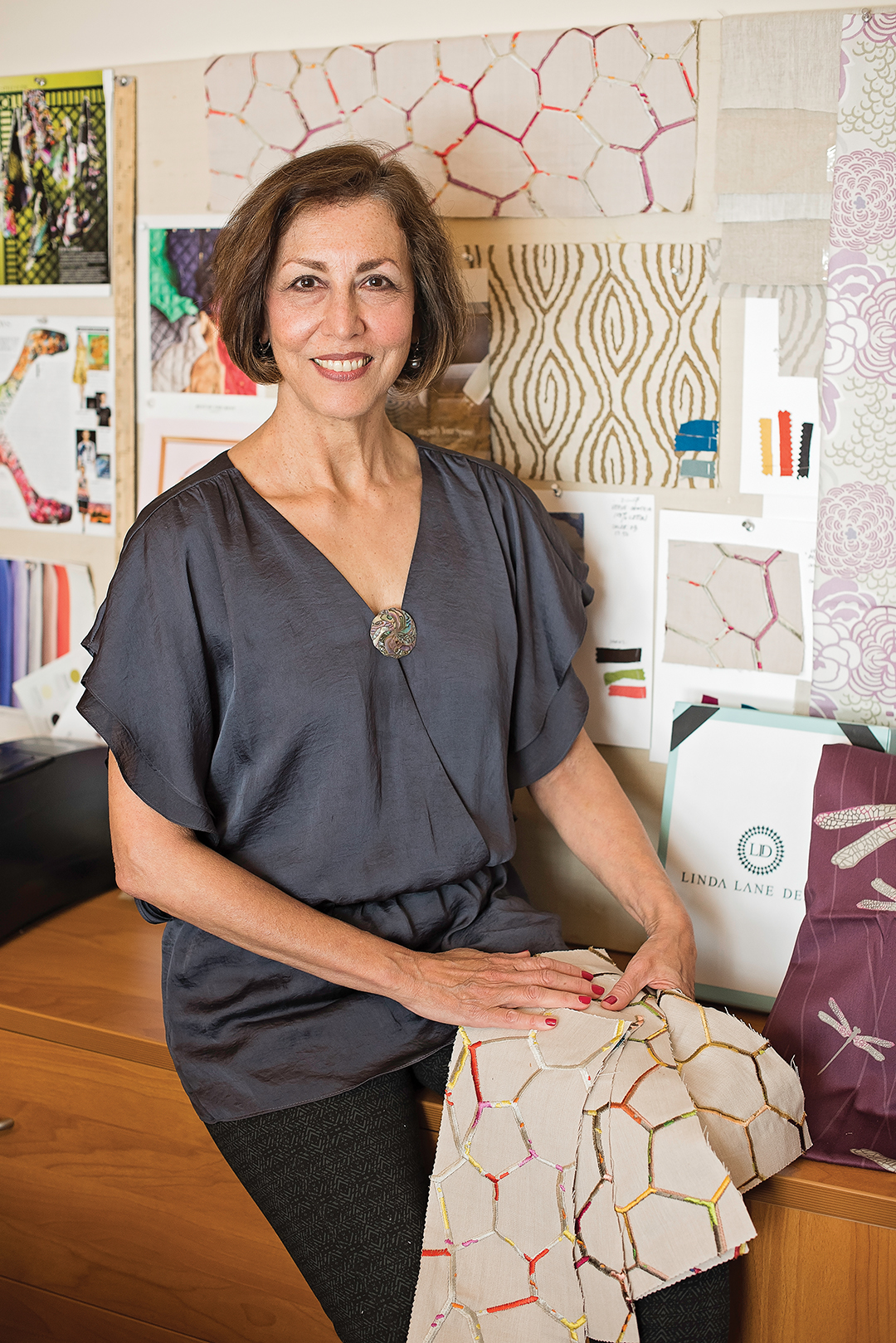
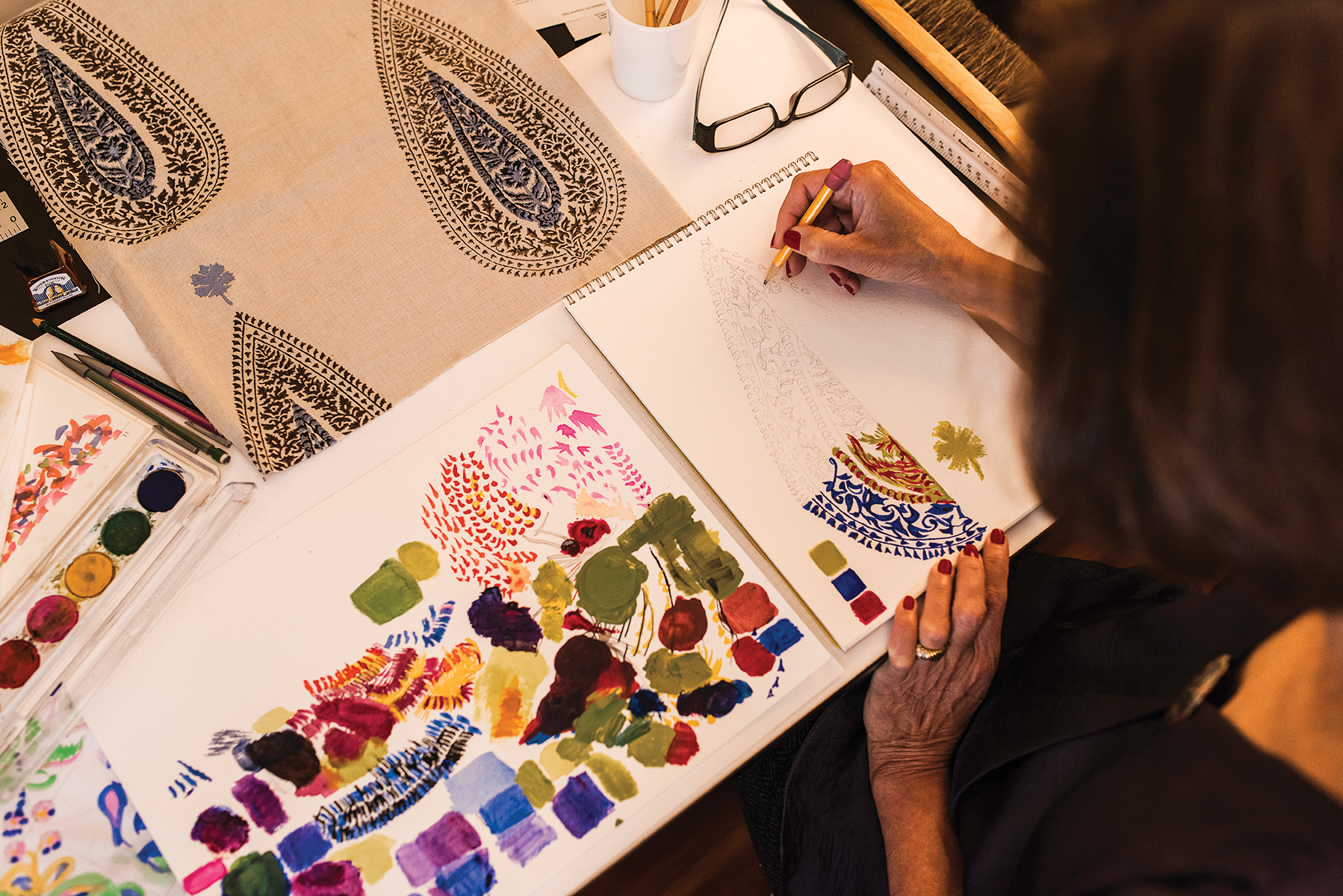 The room is a light-shot one with a drafting table and inspiration boards and fabrics everywhere, draped, pinned to boards, or folded on shelves. There is a spotlight that Lane can direct onto a sketch or painting of a new fabric under development in order to dissect how the color changes. She must, Lane explains, have good light in order to properly work with color.
The room is a light-shot one with a drafting table and inspiration boards and fabrics everywhere, draped, pinned to boards, or folded on shelves. There is a spotlight that Lane can direct onto a sketch or painting of a new fabric under development in order to dissect how the color changes. She must, Lane explains, have good light in order to properly work with color. 